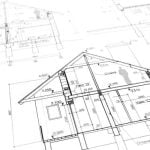If you’re a DIY enthusiast, you know the importance of having a well-equipped and organized workspace. Your home garage workshop is your sanctuary, where creativity, productivity, and the thrill of turning your ideas into reality come together. Whether you’re an occasional hobbyist or a seasoned DIYer, having a well-designed home garage workshop is essential in unleashing your full potential.
A well-designed workshop not only enhances your productivity but also contributes to your overall enjoyment of DIY projects. Imagine having everything in its place, tools organized for easy access, and ample workspace for all your tasks. A functional and efficient workshop layout allows you to work seamlessly, saving you time and frustration while inspiring new ideas along the way.
Moreover, a properly designed home garage workshop provides significant benefits in terms of organization and safety. With designated zones for different activities and optimized storage solutions, you can keep clutter at bay and maintain order in your workplace. Additionally, implementing safety measures such as proper handling of hazardous materials and securing electrical outlets ensures that you can work confidently without compromising your well-being.
To elevate your DIY game and make the most out of your home garage workshop experience, it’s crucial to assess the available space, curate essential tools and equipment, optimize lighting and ventilation, create functional workbenches and storage solutions, prioritize safety measures, seek design inspirations for personalization, and even consider incorporating advanced technology and automation.
This article will guide you through all these aspects step by step to help you improve your home garage workshop into the dream space that fuels your passion for DIY projects.
Assessing Space and Layout
Before diving into the exciting process of setting up your home garage workshop, it is crucial to assess the available space and evaluate the layout. Optimizing your garage for a workshop involves careful planning and organization to ensure efficiency and functionality. Here are some tips to help you make the most of your workspace:
Organizing and Decluttering
The first step in optimizing your garage for a workshop is to declutter and organize the space. Remove any unnecessary items or belongings that are taking up valuable space. Consider donating or selling items that you no longer need or use. Sort through tools, equipment, and materials, categorize them, and find proper storage solutions for each category.
Maximizing Vertical Storage
Utilizing vertical storage solutions can significantly increase the available workspace in your garage workshop. Install wall-mounted shelving units or utilize pegboards to hang tools and smaller equipment. This not only keeps your tools easily accessible but also frees up floor space for larger projects or machinery.
Creating Designated Zones
To optimize workflow in your garage workshop, consider creating designated zones for different activities. For example, have a dedicated area for woodworking with a workbench and tool storage nearby. Set up an area specifically for automotive repairs with appropriate storage solutions for car parts and accessories. Having clearly defined zones will streamline your work processes and make it easier to find what you need when working on specific projects.
A well-designed home garage workshop starts with assessing the available space and optimizing the layout accordingly. By organizing and decluttering, maximizing vertical storage solutions, and creating designated zones, you can create an efficient workspace that allows you to tackle DIY projects with ease. Now that you have set up a solid foundation by optimizing your garage’s layout, it’s time to move on to curating essential tools and equipment for your workshop arsenal.
Essential Tools and Equipment
Building a well-equipped home garage workshop requires a carefully curated collection of essential tools and equipment. Having the right tools not only makes DIY projects easier and more efficient but also ensures better quality results. In this section, we will explore the must-have tools and equipment for a well-equipped workshop, provide insights on selecting high-quality options, offer budget-friendly alternatives, and share tips on proper maintenance and care.
When curating your workshop arsenal, it’s important to have a good selection of hand tools such as hammers, screwdrivers, wrenches, pliers, and tape measures. These basic hand tools are versatile and can be used for a wide range of projects. Investing in high-quality options will ensure their durability and longevity.
Power tools are another essential component of any workshop. A drill with various bits and attachments is a must-have for drilling holes and driving screws. A circular saw or miter saw is essential for cutting wood accurately. Other power tools like an orbital sander, jigsaw, router, or table saw can be added based on your specific needs.
Additionally, having a well-stocked toolbox with various fasteners (screws, nails), adhesives (wood glue), tapes (duct tape), and abrasives (sandpaper) is crucial for tackling different projects effectively. It’s also advisable to have safety equipment like goggles, gloves, ear protection, and dust masks to protect yourself while working.
While acquiring all these tools may seem expensive initially, there are budget-friendly alternatives available without compromising too much on quality. Consider purchasing second-hand tools from reputable sources or opting for affordable tool brands that offer decent performance. Remember that investing in quality tools pays off in the long run as they last longer and perform better.
Proper maintenance and care of your tools are essential to keep them in good working condition. Regularly clean dirt or debris from them after use and store them in appropriate places where they won’t be damaged. Sharpen blades and bits regularly to ensure clean cuts, and periodically lubricate moving parts to prevent rusting or seizing.
Curating a well-equipped workshop arsenal may take time and effort, but it is an investment that will greatly enhance your DIY experience. Having the right tools and equipment not only makes your projects easier and more efficient but also allows for greater creativity and precision. So take the time to carefully consider your needs, research different options, and build a collection of tools that will serve you well in your home garage workshop.
Lighting and Ventilation
Lighting and ventilation are crucial elements to consider when improving a home garage workshop. Adequate lighting ensures that you can see your work clearly, reducing the likelihood of mistakes and accidents. Additionally, proper ventilation helps to maintain a safe and comfortable working environment by controlling temperature, humidity, and air quality.
When it comes to lighting, natural light is ideal. If your garage has windows or skylights, make sure they are clean and unobstructed to allow maximum daylight into your workspace. Natural light not only brightens up the area but also provides a more accurate representation of colors and textures. If natural light is limited, supplement it with artificial lighting options like overhead fixtures or task lamps. LED lights are an energy-efficient option that provides bright and focused illumination.
In terms of ventilation, good airflow helps in dissipating fumes, reducing heat buildup, and maintaining fresh air circulation. Improved airflow prevents the accumulation of harmful particles such as sawdust or chemical fumes, promoting better respiratory health while you work. Installing an exhaust fan or investing in a portable air purifier with a carbon filter can greatly improve the air quality within your workshop.
| Lighting Tips: | Ventilation Tips: |
|---|---|
| Maximize natural light | Ensure adequate airflow |
| Supplement with artificial lighting | Invest in an exhaust fan or portable air purifier |
| Choose energy-efficient LED lights | Maintain clean filters for optimal performance |
By addressing the lighting and ventilation needs in your home garage workshop, you create a safer and more comfortable environment that allows you to work with greater precision and efficiency. Don’t overlook these important aspects when improving your workshop space.
Workbench and Storage Solutions
Choosing the Right Workbench
One of the most important components of a home garage workshop is a sturdy and reliable workbench. The workbench serves as the main workspace for DIY projects, providing a stable surface for various tasks such as woodworking, crafting, and repairing. When choosing a workbench, it’s essential to consider your individual needs and space constraints.
Firstly, consider the size of your garage and how much space you can allocate for the workbench. Measure the available area and choose a workbench that fits comfortably without obstructing other areas of the workshop. Additionally, take into account the type of projects you usually undertake, as certain tasks require larger or specialized workbenches.
Another factor to consider is the material used for the workbench. Common options include solid wood, metal, or composite materials like MDF (medium-density fiberboard). Each material has its own pros and cons in terms of durability, weight capacity, and resistance to various chemicals or impacts. Take time to evaluate which material suits your needs best.
Furthermore, some workbenches come with additional features such as built-in storage shelves or drawers. These can be highly beneficial for keeping your workspace organized by providing convenient storage space for tools and materials. Consider these additional features when selecting a workbench that will help create an efficient and clutter-free workspace.
Efficient Storage Solutions
In addition to choosing the right workbench, incorporating effective storage solutions in your home garage workshop is crucial for maintaining an organized workspace. Proper organization ensures that tools are easily accessible when needed, maximizing productivity during DIY projects.
Pegboards are a popular storage solution in workshops due to their versatility. They allow you to hang frequently used tools within reach and keep them visible at all times. Invest in good-quality hooks and organizers that are strong enough to support the weight of your tools.
Wall-mounted cabinets are another excellent storage option, especially for smaller tools or materials that need to be protected from dust or damage. These cabinets can be mounted above the workbench or along the walls, providing ample storage space without taking up valuable floor area.
If you have a large collection of tools, consider investing in a tool chest. This portable storage solution consists of multiple drawers and compartments specifically designed to accommodate different types of tools. With a tool chest, you can easily transport your tools around the workshop as needed and keep them organized in one accessible location.
Remember, an organized workspace not only enhances efficiency but also promotes safety by minimizing the risk of accidents caused by tripping over clutter or mishandling tools. By integrating workbench and storage solutions that suit your needs, you can create a functional and organized home garage workshop that makes DIY projects more enjoyable and productive.
Safety First
In any workshop environment, safety should always be the top priority. This is especially true for home garage workshops, where DIY enthusiasts often work alone and may not have access to the same safety measures found in a professional setting. Implementing proper safety measures in your home garage workshop is essential to prevent accidents and injuries while allowing you to focus on your projects with peace of mind.
One important aspect of workshop safety is the proper handling and storage of hazardous materials. Whether it’s paint cans, solvents, or chemicals, these substances can pose serious risks if not stored correctly. It’s crucial to ensure that all hazardous materials are properly labeled and stored in a well-ventilated area away from ignition sources.
Storing them in locked cabinets or containers can prevent accidental spills or unauthorized access. Additionally, be sure to educate yourself on the safe disposal methods for these materials, as improper disposal can have detrimental effects on the environment.
Another critical safety measure is securing electrical outlets in your garage workshop. Faulty wiring or overcrowded electrical circuits can lead to electrical fires or electrocution hazards. Consider hiring a licensed electrician to inspect your garage’s electrical system and make any necessary repairs or upgrades.
Install ground fault circuit interrupters (GFCIs) near water sources like sinks or utility tubs to prevent electric shock accidents. Also, be mindful of using extension cords and power strips – avoid overloading them and use only those rated for outdoor use when needed.
Protective gear is an absolute must-have when working in any workshop environment, including your home garage workshop. Safety glasses should always be worn to protect your eyes from flying debris while operating power tools. Ear protection, such as earmuffs or earplugs, should also be used when working with loud machinery that can damage your hearing over time. In addition to eye and ear protection, wearing gloves can help protect your hands from cuts, burns, and other injuries.
Overall, taking the necessary safety precautions in your home garage workshop will create a safer and more secure working environment. By implementing proper storage solutions for hazardous materials, securing electrical outlets, and using protective gear, you can greatly reduce the risk of accidents and injuries.
Remember, safety should always be the number one priority when it comes to DIY projects – it’s better to take a few extra minutes to ensure everything is set up properly than to deal with the consequences of an avoidable accident.
| Hazardous Materials | Electrical Safety | Protective Gear |
|---|---|---|
| Properly label and store hazardous materials | Hire a licensed electrician for inspections | Wear safety glasses to protect eyes from debris |
| Store in well-ventilated area away from ignition sources | Install ground fault circuit interrupters (GFCIs) | Use ear protection when operating loud machinery |
| Educate yourself on safe disposal methods | Avoid overloading extension cords and power strips | Wear gloves to protect hands from cuts and burns |
Design Inspirations and Personalization
Creating a well-designed home garage workshop not only requires functionality and organization but also an inspiring atmosphere that fuels creativity and enhances the overall experience. Transforming your workshop into a space that reflects your personal style and interests can make it a place where you enjoy spending time and feel motivated to take on DIY projects. Here are some design inspirations and ideas for personalizing your workshop:
- Artwork and Decor: Incorporating artwork, posters, or photographs related to your hobbies or favorite DIY projects can add a personalized touch to the space. Consider framing vintage tools or displaying handmade creations as art pieces on the walls. Additionally, adding shelving units or floating shelves can provide space to showcase objects that inspire you.
- Motivational Quotes: Hang inspirational quotes or sayings that resonate with you in your workshop. They can serve as a source of motivation when you’re working on challenging projects or facing creative blocks. You can create your own custom wall decals or use pre-made vinyl lettering to easily apply the quotes to the walls.
- Comfortable Seating Area: Creating a designated seating area in your workshop can be beneficial for relaxation and reflection during breaks from work. Consider adding comfortable chairs, bean bags, or even a small sofa where you can sit back and regain inspiration before diving back into your projects.
- Color Scheme: Choosing a color scheme that matches your personality can have a significant impact on the overall atmosphere of your workshop. Bright colors such as yellow or orange can create an energizing environment, while cool tones like blue or green can promote calmness and concentration. Experiment with different color combinations until you find what suits you best.
- Music and Entertainment: Incorporating music or other forms of entertainment in your workshop can enhance creativity and productivity. Install speakers for playing music while you work, set up a small television for streaming DIY tutorials or podcasts, or even consider hanging a dartboard or placing a mini basketball hoop for short breaks and relaxation.
Remember, personalizing your workshop should not compromise its functionality. Ensure that you have enough space to work, ample storage for tools and materials, and a clutter-free environment that promotes efficiency. By incorporating personalized design elements into your home garage workshop, you can create a space that inspires and motivates you to take on DIY projects with enthusiasm.
- Consider incorporating artwork, posters, or photographs related to your hobbies or favorite DIY projects.
- Hang inspirational quotes or sayings that resonate with you in your workshop.
- Create a designated seating area with comfortable chairs, bean bags, or even a small sofa.
- Choose a color scheme that matches your personality and enhances the overall atmosphere of your workshop.
- Incorporate music or other forms of entertainment in your workshop to enhance creativity and productivity.
Taking Your Workshop to the Next Level
With advancements in technology, DIY enthusiasts can take their home garage workshop to the next level by incorporating advanced technology and automation. These innovative tools and systems can enhance convenience, efficiency, and productivity in your workshop. Here are some ideas on how you can incorporate advanced technology into your workspace:
- Smart tool tracking systems: Keep track of your tools and equipment with smart tool tracking systems. These systems use Bluetooth or RFID technology to monitor the whereabouts of your tools, allowing you to easily locate them when needed. Some even have built-in inventory management features that notify you when a tool is missing or needs maintenance.
- Wireless charging stations: Say goodbye to tangled cords and cluttered workbenches with wireless charging stations for your power tools and devices. Simply place your tools on the charging station, and they will be wirelessly charged, ready for use whenever you need them.
- Remote-controlled garage door openers: Make accessing your workshop more convenient with remote-controlled garage door openers. These smart devices allow you to open and close your garage door from anywhere using a smartphone app or voice commands, eliminating the need for keys or remotes.
- Smart lighting systems: Enhance visibility in your workshop with smart lighting systems that can be controlled through smartphone apps or voice assistants like Alexa or Google Assistant. These systems allow you to dim or adjust the brightness of lights, set timers for automatic shutoff, and even change the color temperature for optimal working conditions.
By incorporating these advanced technologies into your home garage workshop, you can streamline processes, save time, and create a more efficient working environment. Assess your needs and research the options available to find the best solutions that align with your preferences and budget. Taking advantage of these technological advancements will elevate your DIY game and make your workshop a truly cutting-edge space.
Conclusion
In conclusion, a well-improved home garage workshop is essential for DIY enthusiasts looking to elevate their DIY game. By following the tips and suggestions outlined in this article, readers can transform their garage into a functional and organized workspace that enhances productivity, creativity, and overall enjoyment of DIY projects.
Optimizing the space and layout of the garage is the first step in creating a well-designed workshop. By decluttering and organizing the space, maximizing vertical storage, and creating designated zones for different activities, individuals can ensure efficient workflow and easy access to tools and materials.
Equipping the workshop with essential tools and equipment is also crucial. Selecting high-quality tools or budget-friendly alternatives, as well as properly maintaining and caring for them, will ensure optimal performance and longevity.
Proper lighting and ventilation are important considerations in creating a safe and comfortable working environment. Choosing the right lighting fixtures and ensuring adequate ventilation will enhance visibility, prevent accidents, and improve air quality in the workshop.
Investing in a sturdy workbench and utilizing effective storage solutions such as pegboards or wall-mounted cabinets further contribute to an organized workspace. These features make it easier to complete projects efficiently by providing ample space for tasks while keeping tools readily accessible.
Implementing safety measures should always be a priority when setting up a home garage workshop. Adhering to safety guidelines such as proper handling of hazardous materials, securing electrical outlets, and using protective gear significantly reduces the risk of accidents or injuries.
Personalizing the workshop space not only adds aesthetic appeal but also creates an inspiring atmosphere. Incorporating artwork, motivational quotes, comfortable seating areas can boost creativity while making the workshop feel like a personalized sanctuary for DIY enthusiasts.
For those aiming for advanced technology integration within their workshops, options like smart tool tracking systems or remote-controlled garage door openers can provide added convenience and efficiency.
By implementing these improvements in their home garage workshops, DIY enthusiasts can take their skills to new heights. They will experience increased productivity, enhanced creativity, and a heightened level of enjoyment in their DIY projects. So why wait? Elevate your DIY game today by transforming your garage into a well-improved workshop.
Frequently Asked Questions
How can I make my garage more functional?
To make your garage more functional, you can start by decluttering and organizing the space. Remove any unnecessary items and find proper storage solutions for tools, sports equipment, and other belongings. Install shelving, cabinets, or wall-mounted organizers to maximize vertical space. Consider adding a workbench or a sturdy table for projects.
Improve lighting with brighter bulbs or additional fixtures to ensure visibility during tasks. If you have limited floor space, explore options like overhead storage racks to make the most of the available area. Finally, ensure that your garage is well-insulated and weatherproofed for comfortable year-round use.
How to turn a garage into a workshop?
Converting a garage into a workshop requires careful planning and consideration of specific needs. First and foremost, assess the space available in your garage and decide on the layout that best suits your requirements. Depending on the scope of work you intend to carry out in the workshop, consider installing ample electrical outlets to accommodate power tools and machinery. If needed, consult an electrician to ensure that the wiring meets safety standards.
Invest in durable workbenches or tables with sufficient surface area for projects, as well as ergonomic seating if you anticipate spending long hours working there. Adequate storage is also crucial; install shelves, pegboards, or cabinets to keep tools organized and easily accessible. Lastly, consider optimizing ventilation systems to maintain air quality while using potentially hazardous materials.
Can I use my garage as a workshop?
Yes, it is possible to use your garage as a workshop if you have enough space and take necessary precautions. Assess whether your garage has adequate room for both parking vehicles (if desired) and conducting workshop activities comfortably.
Clear out clutter to create an efficient workspace before setting up any equipment or tools. Determine if modifications are required; this could include adding insulation for temperature control or reinforcing walls for mounting heavy equipment securely.

I’m thrilled to have you here as a part of the Remodeling Top community. This is where my journey as an architect and remodeling enthusiast intersects with your passion for transforming houses into dream homes.





